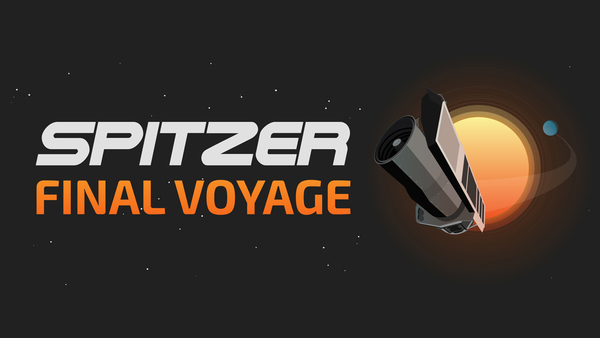
By Bill Green | January 23rd, 2020
In July of 1997, as Manager of the Science Data Processing Systems Section at JPL, I was having the time of my life managing the processing of the first images and data from the Mars Pathfinder mission while meeting the challenges of all the other JPL projects we were supporting.
Then I got a phone call from JPL Deputy Director Charles Elachi that changed my life.
Charles invited me to a stroll around JPL, where he asked me to transfer to Caltech to manage the Infrared Processing and Analysis Center (IPAC), the new home for the SIRTF Science Center (SSC) (later re-named Spitzer Science Center). IPAC had been established on campus in the 1980’s to process science data from IRAS, the first infrared space observatory, which was a NASA collaboration with the Netherlands and England. IPAC had recently been given responsibility for establishing the SSC on campus and the Manager position was open. I told Dr. Elachi I was having too much fun on Mars Pathfinder to consider transferring. Nevertheless, he persisted, and I finally went down to campus and interviewed for the job.
At IPAC, I learned the SSC would be responsible for selecting proposals from the science community for observations that would provide the best scientific return from the mission. The SSC would take all of the approved science observations and come up with the most efficient possible sequence in which to make the observations. The SSC would also develop command sequences executed on the spacecraft to acquire data from the three instruments, process the science data returned from SIRTF, and manage the data archive available to the scientific community and the general public. The addition of the SSC activities to IPAC was expected to double the size of the organization and would require new facilities on the Caltech campus. IPAC was expected to support the development and operations of SIRTF while continuing to meet challenging demands on their other projects that supported infrared science investigations and missions.
How could I resist the opportunity to get involved in that challenge? I became the IPAC and SSC Manager at Caltech.
The next six years were a whirl of activity. We built a great team of scientists and engineers, adding to the deep talent pool already at IPAC, to support all phases of development and operations. We established links with the three scientists responsible for designing, building and delivering the flight instruments, at Cornell, the University of Arizona, and Harvard Smithsonian Center for Astrophysics. SSC staff were assigned to work with those teams during detector and instrument development, calibration, and spacecraft integration and testing ensure our output products met stringent science requirements.
Our uplink software development teams worked long hours to unscramble issues with the on-board flight software, so that the commands we sent to the instruments for observations were being handled correctly. Another SSC team worked on the software needed to provide the tools for the science community to submit observation proposals. We worked with the Caltech Physics Math and Astronomy Division on getting the facilities we needed on campus to support flight operations (offices, a data center, meeting rooms, secure data links to JPL, etc.) All this would never have been possible on the tight schedules we had to meet to integrate and test our systems within the overall mission data system without the dedicated effort of a wonderful team we were able to assemble to meet all the challenges we faced. I loved working with all of them.
As launch approached, everything came together: our software was delivered and tested on time and it passed all tests with the flight hardware and spacecraft simulators. Around that time, I was diagnosed with a heart condition, so I made the difficult decision to leave IPAC and the SSC just before launch. On my next-to-last day at Caltech in March 2003, I flew to Florida for a prelaunch project meeting, said a final farewell to the spacecraft and instruments and the launch vehicle in their final tests, and then flew home in time for termination processing at Caltech. I took a final goodbye tour of IPAC and the SSC.
My medical procedure in June 2003 was successful, and like Spitzer, my stent has also operated successfully for 16 years! On launch day, August 24, 2003 (my birthday!), my wife Barbara and I watched the launch live on a video link from the Cape in the SSC conference room.
Since that time, I have enjoyed learning of all the amazing discoveries that have come as a result of the Spitzer mission, and all of the engineering effort that made 16 years of successful flight operations possible. You have all worked to create an amazing legacy. Congratulations!

 From Unpaid Intern to Engineering Lead: A Life Voyage With Spitzer
From Unpaid Intern to Engineering Lead: A Life Voyage With Spitzer
 Rime of the Ancient Astronomer: Dr. Deborah Levine Waxes Poetic With a Spitzer Tale in Verse
Rime of the Ancient Astronomer: Dr. Deborah Levine Waxes Poetic With a Spitzer Tale in Verse



